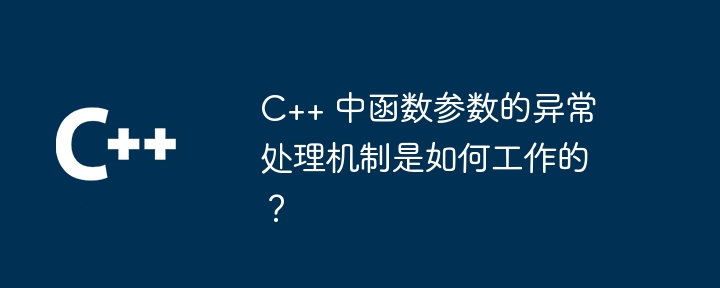在 c++++ 中可以使用异常处理机制处理函数参数中的异常情况:当函数内出现错误时,可以使用 throw 语句抛出一个异常对象。函数自身和调用它的函数都可以通过 try 和 catch 块捕获异常。实战案例:在 getfilepath() 函数中,当输入的文件路径无效时抛出一个异常。

C++ 中函数参数的异常处理机制
在 C++ 中,函数参数可以通过异常处理机制来处理异常情况。异常处理机制允许在发生错误时将控制权转移到代码的其他部分。
异常抛出
立即学习“C++免费学习笔记(深入)”;
当函数内部发生错误时,可以使用 throw 语句抛出一个异常对象。异常对象是一种特殊的类型,它包含有关错误的附加信息。
void myFunction(int num) {
if (num < 0) {
throw std::invalid_argument("num must be non-negative");
}
// ...
}异常捕获
函数自身和调用它的函数都可以通过 try 和 catch 块来捕获异常。
void myFunction(int num) {
try {
if (num < 0) {
throw std::invalid_argument("num must be non-negative");
}
// ...
} catch (std::invalid_argument& e) {
// 异常处理代码
}
}实战案例
考虑一个函数 getFilePath(), 它从用户输入中获取文件路径。如果输入的路径无效,则函数应抛出异常。
#include <iostream>
#include <filesystem>
std::string getFilePath() {
try {
std::string path;
std::cout << "Enter file path: ";
std::getline(std::cin, path);
if (!std::filesystem::exists(path)) {
throw std::invalid_argument("File not found at " + path);
}
return path;
} catch (std::invalid_argument& e) {
std::cout << e.what() << std::endl;
throw; // 将异常重新抛出
}
}
int main() {
std::string filePath;
try {
filePath = getFilePath();
// ... 使用文件路径
} catch (std::invalid_argument& e) {
std::cout << "Error: " << e.what() << std::endl;
}
return 0;
}


